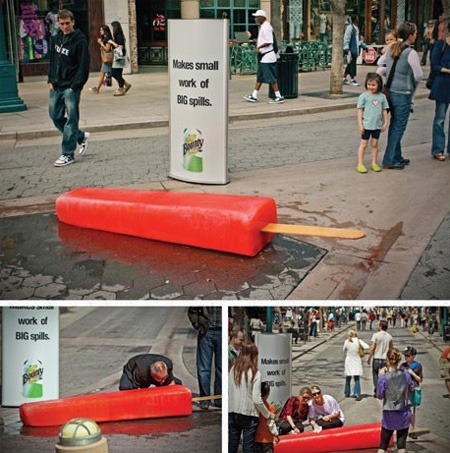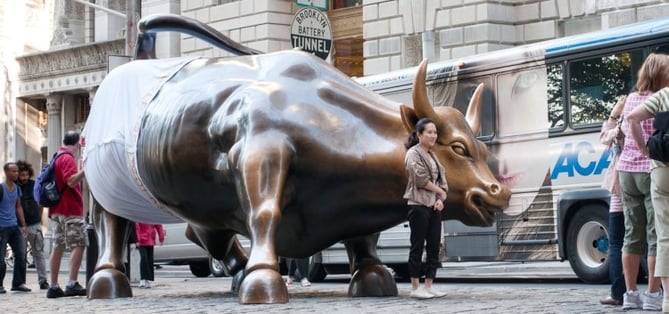In addition to the previous information describing guerilla marketing and its intentions, many other professionals describe the act in further detail. In marketing, guerrilla techniques mainly act on the element of surprise. It intends to form highly unconventional campaigns that catch people unexpectedly in the everyday routine of life. The term "guerilla marketing" was established in the 1980's era by the past business writer Jay Conrad Levinson. The writer composed several books describing guerilla tactics used in various professional manners. At that time, guerilla marketing appeared in a different manner. Today, the quickly growing digital landscape in changing what the tactic looks like.
Furthermore, this changing tactic is very advantageous for marketers. This practice allows marketers to operate on a quite low - cost budget. The implementation, both creative and intellectual, is the main investment. However, this does not have to be costly. Professionals mainly refer to it as an investment in time and not money. Using certain segments of a report and further elaborating in a blog post is one way that shows time and not monetary usage. Guerilla marketing works by repositioning the current environment of the audience. Through evaluation and configuring certain segments, its purpose can be changed to include the brand.
In addition to its usage, several types of guerilla marketing exist. Outdoor guerilla marketing adds something to preexisting urban landscapes. Some examples of this type are putting something removable into a statue, or placing temporary artwork on sidewalks and streets. Indoor guerilla marketing is like outdoor marketing, however, it only takes place in indoor locations. Such indoor locations could include train stations, shops, and university campus buildings. Another example is event ambush guerilla marketing. This practice involves leveraging the audience of an in-progress event to promote a product or service in a noticeable manner. This oftentimes occurs without the permission of event sponsors, and includes events like concerts and sporting games. Also, experiential guerilla marketing is another tactic. This practice involves all of the above tactics, but they take place in a manner that requires the public interact with the brand.
In addition to some of the items listed above, many modern day examples of guerilla marketing are used quite often.

This is an example of a marketing tactic used by Bounty. We are all too familiar with the everyday messes like coffee spills, table messes, and other spillage of liquids and items. Bounty placed life - sized messes along the streets of New York to help easily catch the eyes of those passing by. Some would argue that that a billboard could have just have been used to portray this idea. However, billboards are used very often by people. And, that tactic could not be quite as eye - catching as this example. This was an innovative way for Bounty to draw people's attention and would be very uneasy to ignore. The main takeaway from this advertisement is to identify the largest problem your product or service solves. Then, discover an unconventional method, without using words, to display it to the public.

The picture listed above is another example of guerrilla marketing used today. This brilliant portrayal of guerilla marketing by an underwear company shows an unconventional method of advertising its product or service. The is the placement of a large pair of underwear briefs on a commonly known statue of a charging bull. Goldtoe was looking for a way to tease and promote the launch of it's new undergarments. Well, this idea certainly helped the company achieve its objective. In addition to the charging bull, other pairs of undergarments were places on statues throughout New York City. Due to the budget friendly nature of guerrilla marketing, one can assume that Goldtoe used leftover manufacturing fabric to complete this action. The largest takeaway from this marketing campaign is to not overthink a particular idea. Some of the silliest ideas can turn out to be the most effective, efficient, and productive.
Today, guerrilla marketing is a productive and effective use of companies to display products or services. This tactic can be very helpful for an organization to get its product or service to the public's eye. Due to its effectiveness and budget friendly nature, this strategy would prove very smart and effective for all organizations to use.
Zantel - Weiner, Amanda. July 30, 2018 "What Is Guerilla Marketing." Retrieved from https://blog.hubspot.com/marketing/guerilla-marketing-examples
Until recently, I did not know that this method of advertising had an official description, though I have encountered a few of these types of sets. When I encountered these organically, I was indeed struck by the effectiveness in having me remember the product or service, simply due to their unorthodox nature. It almost seems questionable whether or not this is allowable, considering that they often use existing infrastructure and modify it to suit their purposes. Considering this, and the various jurisdictions which may govern advertisements differently, it seems that this method is high risk/high reward, unless one can do a bit of work upfront to ensure no affronts would result from crafting one of these displays. I would presume that these would be more prevalent in more populated areas, as competition is greater, along with visibility. One of the more memorable guerrilla marketing instances I can remember is when a McDonald’s, adjacent to a Burger King, advertised on their billboard that they were hiring. The Burger King posted a billboard which read, “Why work for a clown when you can work for a king.”
ReplyDelete